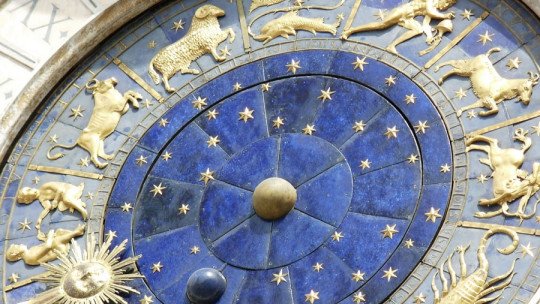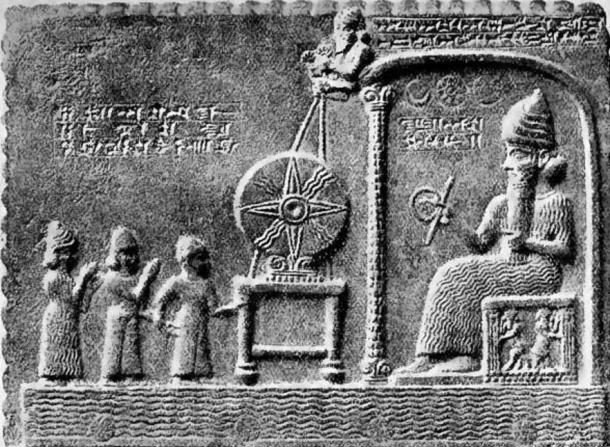
Most people know their zodiac sign. In fact, it seems that the topic of the horoscope is back in fashion, especially when it comes to knowing if the person we just met complements us or if our relationship has a future.
However, what exactly do we know about the Zodiac? The sign that we all know is only the sun sign, that is, the one that determines the position of the sun at the moment we are born. In the complex world of astrology there are many other elements, such as the ascendant or the moon sign that, for those who believe in it, complement the information about the character and potential of the person.
If you are interested in knowing how and where it all started, keep reading. We will tell you the story of the origins of the Zodiac and how it evolved over time through the cultures that shaped it.
What is the origin of the belief in the horoscope?
Human beings have always looked to the stars to alleviate their anguish. In the course of human existence, countless doubts, dejections and crises appear, during which men and women try to find a meaning for our coming into the world and, above all, an answer to the disturbing question of what the future holds for us. .
That is, in essence, the meaning of the horoscope: try to alleviate the existential anxiety of the human being And since primitive communities saw in creation a cosmos that did not differentiate what was “above” from what was “below” and that, therefore, influenced each other, they learned to read the meaning of life and death in the heavens. . In other words: the divine will was found in the movement of the stars, and whoever could unravel this mystery had the secret of existence in their hands.
Babylon: the origin of everything
All historians agree that the place of “invention” of astrology is ancient Babylon. Specifically, astrologer James Herschel Holden is very categorical when he states in his book A History of Horoscopic Astrology that “The Babylonians invented astrology”
As it is. Although we found the first celestial investigations in Sumer in the 3rd millennium BC, it was the Babylonians who, a thousand years later, wrote down their observations and considerations on astrological matters. Thus, they adopted the constellations that the Sumerians had identified and “learned” to read the will of the gods in them and in the movement of the planets.

In this sense, one of the oldest documents preserved is the Enuma Anu Enlil, a collection of seventy cuneiform tablets containing no less than 7,000 “prophecies” from heaven. Among them, we find the famous Mul-Apin tablet, from the 16th century. VII BC, considered one of the first compilations of knowledge in astrology.
The ancient Babylonians saw manifestations of their main gods in the celestial bodies Thus, Jupiter was Marduk, the lord of the sky. Venus would be identified with Ishtar, the beautiful and vain lady of love and death. Saturn was Ninurta, god of the earth and agriculture. Mercury would correspond to Nabu, son of Marduk and god of writing. Finally, Mars would be Nergal, the powerful lord of the dead.
Reading the sky is knowing the will of the gods
To the five planets that were known in Babylonian times were added the Sun and the Moon, identified with the gods Shamash and Sin, respectively. This plethora of gods made up the Mesopotamian cosmos, and in the movements of the respective celestial bodies, which orbited the known constellations, the Babylonians sought to unravel the will of divinity.
This task was strictly limited, obviously, to the priestly caste, the only one that had the power and sufficient knowledge to correctly read the plan of the gods. In the beginning, then, Babylonian astrology was a mundane type of astrology, that is, aimed at knowing the destiny of the nation or of all humanity. In other words, what we know as a natal chart, that is, predictions focused on the life of a single individual, did not appear until the late Babylonian period, when this type of predictions began to be used by kings and princes in their personal capacity. . A custom that, by the way, continued to be used in Christian times and until very recent times; King Philip II himself had a cohort of fortune tellers and astrologers.
The Babylonians They divided the sky into twelve parts of 30 degrees each, and linked each of them to a constellation Already in the Babylonian period we find the same signs that will be maintained later in Western astrology, with the exception of three, which later, in the Ptolemaic period, changed. Thus, the signs of the Babylonian zodiac would be the following: Aries, the Pleiades (later, Taurus), Gemini, Praesepe (later, Cancer), Leo, Spica (later, Virgo), Libra, Scorpio, Sagittarius, Capricorn, Aquarius and Pisces.
It is noteworthy that the names of these constellations and signs were different in the Babylonian language. The names as we know them today are of Greek and Latin origin; For example, Sagittarius comes from the Latin Sagittarius, the horseman who shoots arrows, and Aries is the Latin nomenclature for the ram, which in turn comes from the Greek word eriphos, with identical meaning.
Alexandria and the birth of the Western horoscope
If the nomenclature of the horoscope signs is Greek and Latin, it makes sense to consider that, from ancient Mesopotamia, astrology passed to the Mediterranean at some point in history. Indeed. It seems that, from Babylon, the zodiac was transmitted to the Persian Empire, when this people subjugated the Babylonians in the 6th century BC. Later, after the conquests of Alexander the Great, the reading of the heavens passed to the Hellenic culture of Egypt, which had its axis in the city of Alexandria, founded by the Macedonian conqueror in the 4th century BC
In Alexandria, ancient Babylonian knowledge was consolidated and ended up taking the definitive form that we know today: a combination of the Babylonian zodiac and characteristics of Greek philosophy, without forgetting some ancient Egyptian precepts From ancient Babylon, Hellenic Alexandria collects the division of the sky and its twelve corresponding signs (with the changes that we have already commented on in three of them). From Greek philosophy, the Western zodiac inherited ideas such as the four elements (fire, earth, water and air), which forever permeated the horoscope, granting specific characteristics to each of the signs.
But, probably, one of the most important inheritances of Alexandrian astrology was the horoscope as a natal prediction. We have already seen how the Babylonians, in their last period, in turn made natal charts; but it was not until the Ptolemaic era that this system was consolidated and transmitted forever to European culture. In fact, one of the best-known treatises on Western astrology is the Tetrabiblos, written by Claudius Ptolemy in the 2nd century AD. In it, the Alexandrian wise man codifies the zodiacal knowledge of his time and lays the foundations for all subsequent astrology, both medieval as modern.
“What is above is below”
This maxim is probably the one that best summarizes the original idea of the Zodiac. The primitives saw in the stars a reflection of their own life, since everything was connected and “what was above was also below.” In this sense, the rhythm of the stars corresponded to the rhythm of human life; the microcosm of the human being was, in reality, a simple reflection of the great macrocosm That is why the birth chart revealed things about the individual. Nothing can be hidden from the gods, because everything is connected.
Precisely for this reason the ancient Babylonians believed they could read the future of existence in the heavens. The divine will was written in them, which, as a total will, had its connection with life on earth. For this reason, a geocentric theory of the cosmos was also promoted; If the human being was the most excellent product of creation, it was unimaginable that the world he inhabited did not constitute the axis. Ancient astrology, therefore, was based on a geocentric view of the universe.
But the Zodiac not only represented the reading of divine will, but little by little it evolved into a symbolic representation of the eternal rhythms of the universe. Thus, Aries, the ram, symbolizes spring, rebirth, beginnings. Taurus is the explosion of abundance, which is why it is represented with a bull, evidently related to the cornucopia and the fertility of the fields. Virgo, the virgin, is represented by a maiden holding a sheaf of wheat in her hand: it is the time of harvest, the moment when the earth begins again, like the virgin, to retract. In the ancient symbol that represented Libra, this sign was not a scale, but a sun setting on the horizon (and, in fact, it is still the “official” symbol), an obvious indication of the arrival of autumn and, therefore, the rebirth of shadows.
In the Middle Ages, it was not at all strange to represent Zodiacs in agricultural calendars, since the astrological path was related to the cyclical movements of the earth. February, which has always been and in many cultures the month of renewal and atonement par excellence (previous step to the spring rebirth), coincides with Aquarius, the sign that “renews” (that is why it is symbolized with a jug from which the water, which in turn removes stagnant water). It is not at all a coincidence that it is also the month of Carnival, the cathartic celebration par excellence.








